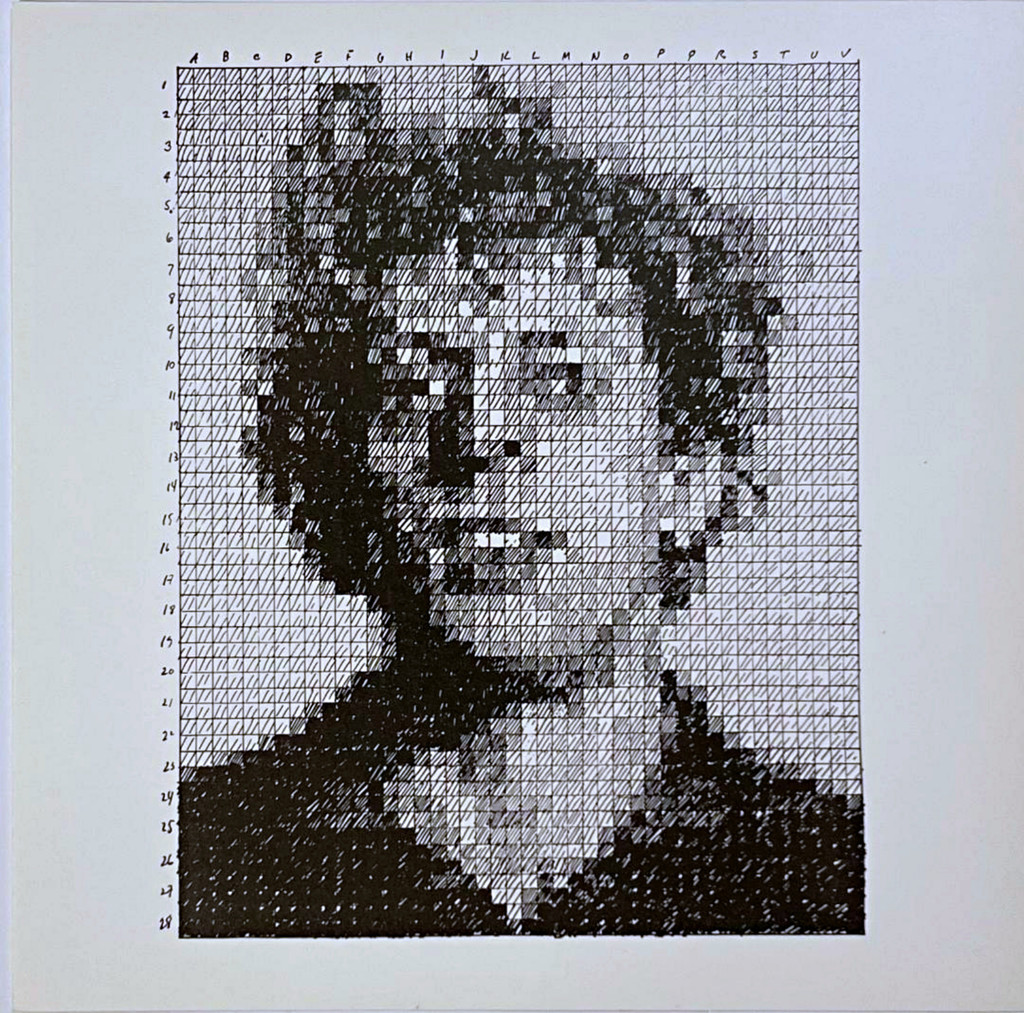
An Educated Collector is Our Best Client
In business for nearly two decades, we are a well established, popular contemporary art boutique specializing in expertly chosen, blue chip prints, multiples, uniques, books, ephemera and merchandise at different price points, with a focus on the secondary market. Please click on the "Contact Us" button at the bottom of this page for questions about any work, pricing and/or to arrange to visit our showroom/gallery - located in between Manhattan's Flatiron and Chelsea Flower Districts.
Description
Chuck Close
Phil, 1976
Limited Edition Print on Strathmore 3-Ply Paper.
Pencil numbered 243/1000 on the verso. Artist's printed copyright name verso.
8 × 8 inches
Unframed
Provenance:
Museum of Modern Art
This famous, long sold out pencil numbered limited edition print, originally offered by the Museum of Modern Art, is adopted from Close’s drawing in which he created an image that occupied a standardized grid. In the original work, Close sprayed a small amount of ink into each square of the grid, thereby giving equal importance to the entire picture. This image depicts his close friend, the well-known composer, Philip Glass. On the verso of the print is the artist's name stamped by Unity Engraving Company, Inc. Never framed; excellent original condition.
Printer: A. Colish Press
Paper: Strathmore 3-Ply
Distributor: The Museum of Modern Art, New York
Stamped by: Unity Engraving Company, Inc.
This is a terrific purchase for Chuck Close fans, because it's a well known print MOMA's 1970s Rubber Stamp Print - of one of the artist's most iconic images (his longtime friend and artistic muse Philip Glass).
The complete Rubber Stamp Portfolio is comprised of 13 rubber stamp prints, in black and white and color, from the artists Carl Andre, Richard Artschwager, Daniel Buren, Chuck Close, Barry LeVa, Sol LeWitt, Agnes Martin, Robert Mangold, Sylvia Plimack Mangold, Don Nice, Myron Stout, Tom Wesselmann, and Joe Zucker. This is a terrific purchase for Chuck Close fans, because it's a well known print MOMA's 1970s Rubber Stamp Print - of one of the artist's most iconic images (his longtime friend and artistic muse Philip Glass).
About Chuck Close:
Chuck Close is known for his innovative conceptual portraiture, depicting his subjects, which are transposed from photographs, into visual data organized by gridded compositions.
Throughout his childhood and adolescence, Close used art as a means of navigating a learning disability. He continued to develop his artistic skills through private art lessons, drawing and painting from live models. As a student at the University of Washington (BA, 1962), and then at Yale (BFA 1963; MFA 1964), he began to emulate the styles of Arshile Gorky and Willem de Kooning, considering himself a third-wave Abstract Expressionist and as he explored this vocabulary he pivoted from biomorphism to figuration.
After studying at the Akademie der Bildenden Künste in Vienna (1964) on a Fulbright grant, Close returned to the United States in 1965. He taught painting at the University of Massachusetts, Amherst, where he received his first solo exhibition in 1967. Seeking to break from the gestural style that had characterised his student work, Close shifted toward Pop-inflected figuration before embracing the tools of commercial art and illustration. Basing his paintings on photographic imagery, Close reduced his palette to black and white, culminating in his large-scale painting Big Nude (1967). His 1967 solo exhibition featured paintings of male nudes, proving controversial and ultimately resulted in a landmark court case that sought to extend freedom of speech to the visual arts.
On relocating to New York, Close continued to explore realism, painting black-and-white photographic portraits of his family and friends onto large-scale canvases in precise detail, applying paint with an airbrush. He participated in his first New York exhibition in 1970 at Bykert Gallery alongside Lynda Benglis and Richard Van Buren. During this time, the Walker Art Center, Minneapolis, acquired Big Self Portrait (1967) directly from his studio. Close relinquished his strictly monochromatic palette in 1970 and began employing a three-color process as well as various imposed systems and techniques. A year later he received his first major museum exhibition Recent Work at the Los Angeles County Museum of Art (1971).
Exploring different modes of representation, Close began in the late 1970s to make explicit use of a grid system or an irregular grid based on a physical relationship to his support. The resulting works read like pixelated mosaics wherein the viewer’s perception blends distinct areas of juxtaposed color—be it layered shapes of colors, fingerprints, or lines—into a unified image.His first retrospective Close Portraits was organized by the Walker Art Center, Minneapolis in 1980, and traveled to the St. Louis Art Museum, Missouri; Museum of Contemporary Art, Chicago; closing at the Whitney Museum of American Art. In 1988, Close was paralyzed following a rare case of spinal artery collapse. Through rehabilitation, he regained his ability to paint by using a brush-holding device strapped to his wrist and forearm. Beginning in 1991, he continued his examinations of portraiture through productions of silk tapestries and, since 2003, has furthered this investigation, producing editions of large-scale Jacquard tapestry portraits.
Constantly revitalizing his practice by challenging modes of representation, Close’s oeuvre encompasses various forms of painting, printmaking, drawing, collage, daguerreotype and Polaroid photography, and, most recently, tapestries.
Courtesy of Pace Gallery
















